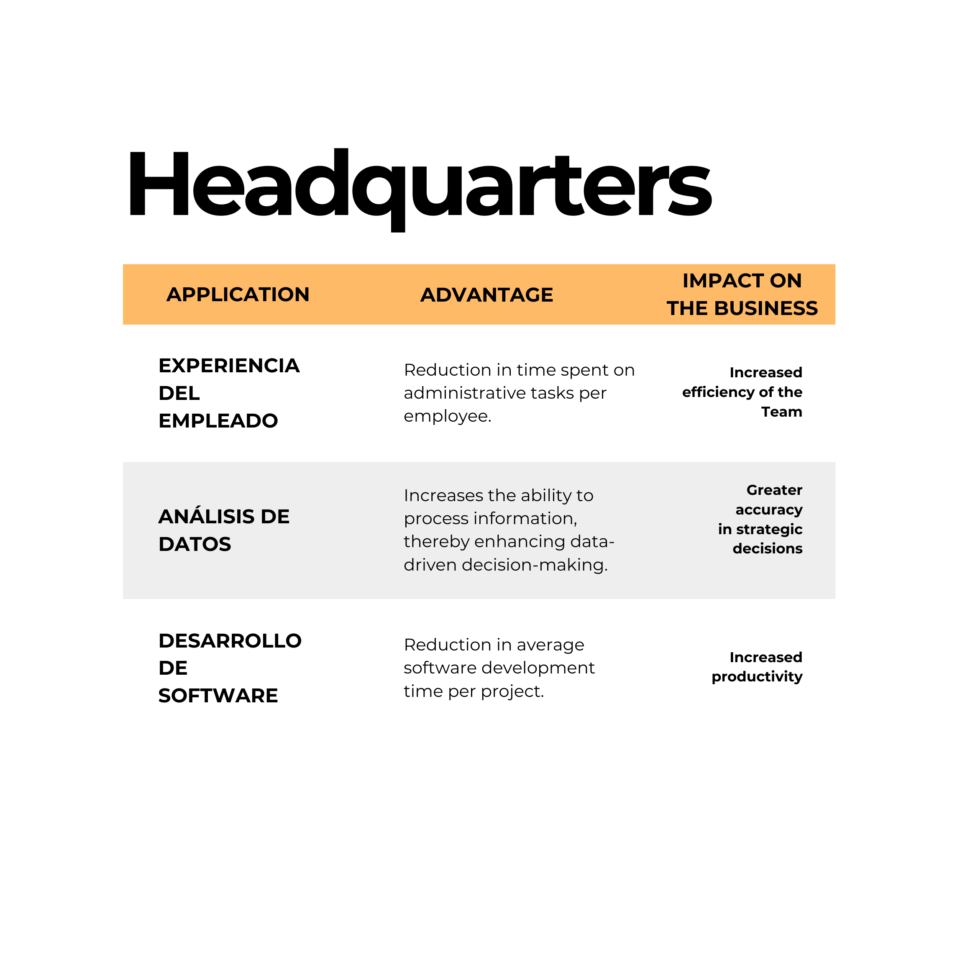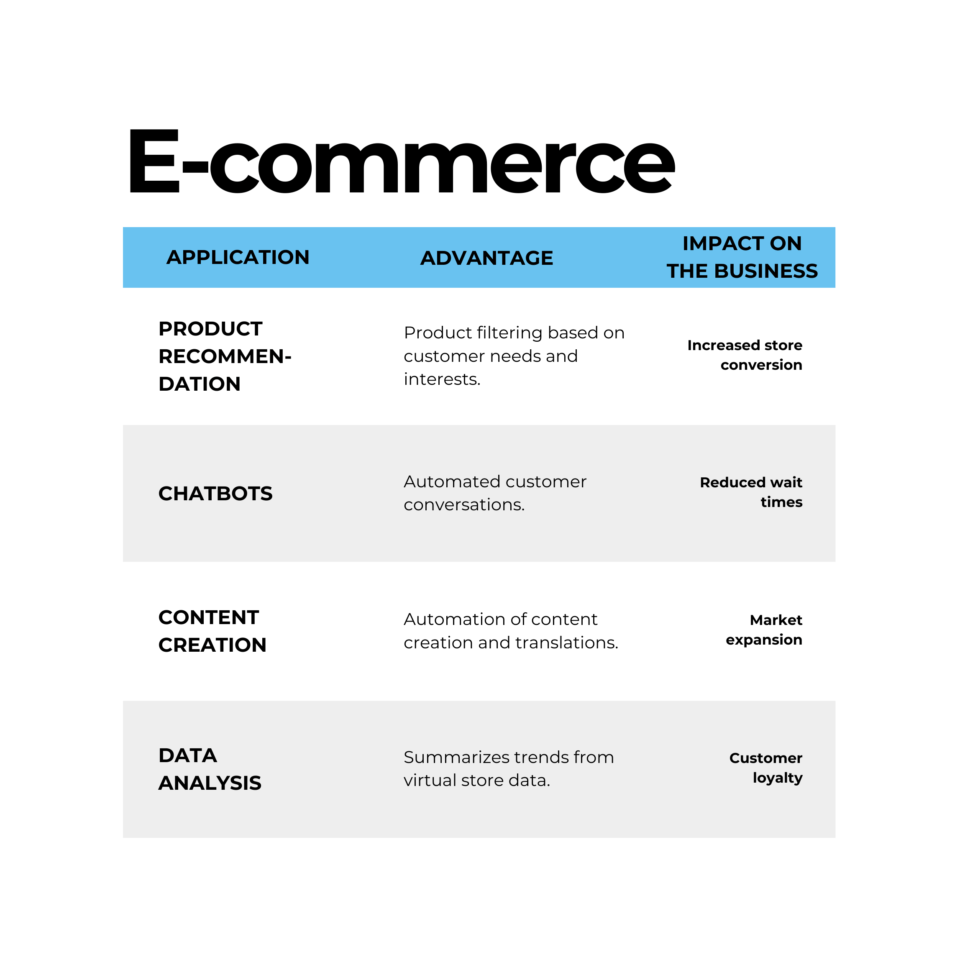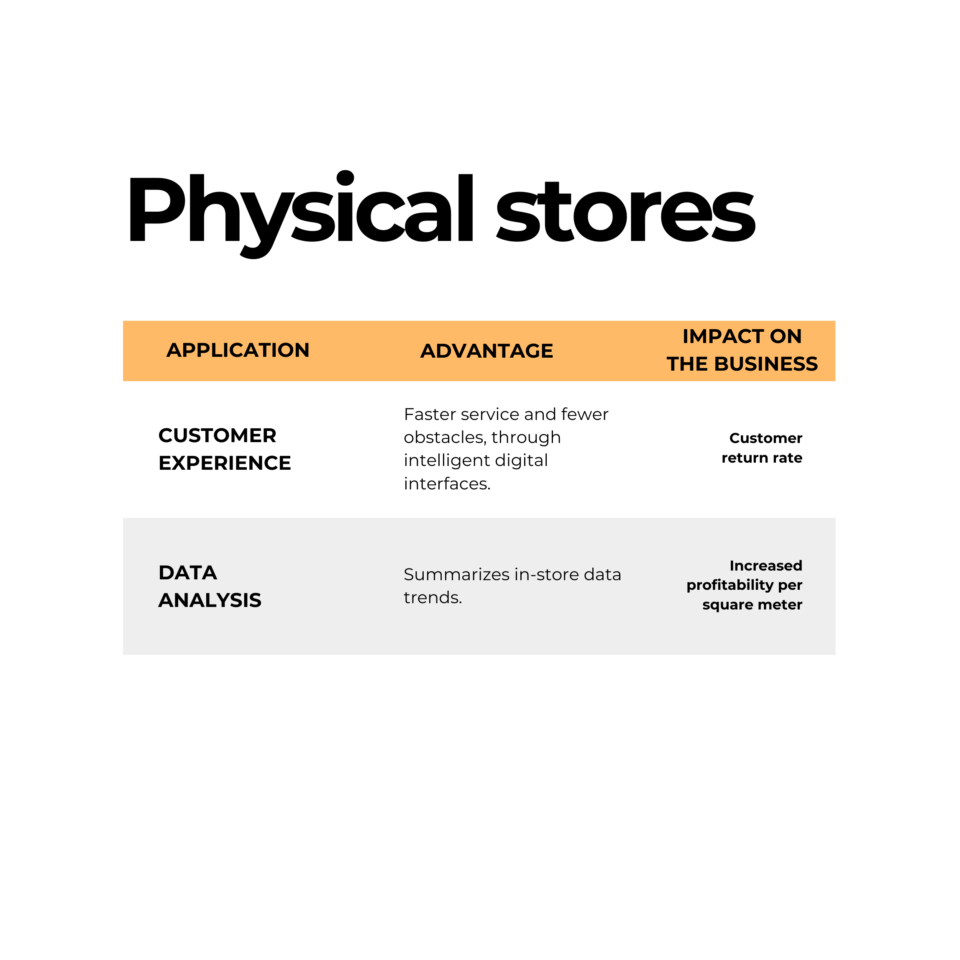Since 2022, with the release of OpenAI’s ChatGPT, Generative AI (Gen-AI) has been in the spotlight, a technology that initially seemed like science fiction. However, over the months, both individuals and industries have been integrating it into their daily work. But are you making the most of this technology? We find examples of companies that have managed to turn it into a differentiating factor in their sectors, such as Morgan Stanley, which uses GEN-AI for financial insights, or Salesforce, which employs it in CRM platforms. Thus, in the retail sector, McKinsey suggests that this technology adds value ranging from 1% to 2% of the total industry revenue and predicts strong growth in the coming years.
In the following blog, we invite you to explore the real impact of this technology and how it can be implemented across different links in the retail value chain, along with the advantages that its use can bring.

The mandatory question is: What is Generative AI?
Although the term is quite self-explanatory, Generative AI (Gen-AI) encompasses a set of technologies under the umbrella of Artificial Intelligence specialized in creating content or data that aims to simulate human intelligence and creativity. Furthermore, this technology employs advanced tools or techniques such as Deep Learning and Artificial Neural Networks to learn from vast datasets and thus provide new content or responses based on that learning. This quality of Gen-AI allows us to “teach” or program it with specific knowledge, endowing it with a potential that goes beyond writing texts or creating images for our LinkedIn posts.
What Advantages Does it Offer?
The application of Gen-AI in the retail sector has rewritten the way companies interact with customers and manage their operations. If we want to harness its potential to the fullest, it is crucial to understand the diversity of applications and the direct impact it has on different links in the retail value chain.
Below, we present some of its applications and the value they bring to our organizations:




The 7 keys to launching Gen-AI in your business
Once we are clear about what Gen-AI is, and we know the final advantages of different applications in a complete value chain, it is normal to ask how to apply them in a real business.
Here, we summarize seven key points to successfully integrate AI into your operations and get the most out of it:
- Delve into the company’s needs, never lose sight of ROI: before embarking on AI implementation, it’s crucial to identify the value-added link in the value chain where this technology can provide the most value with an ROI that makes the project worthwhile: process automation, data analysis for informed decision-making, etc.
- Set clear objectives and define appropriate tracking KPIs: establishing specific goals and key performance indicators will allow monitoring progress and assessing the effectiveness of implemented Gen-AI solutions. Analyze deviations, correct if necessary, and start over. Establishing a system to monitor AI performance and make continuous improvements is vital to maintain relevance and efficiency.
- Choose the right technology: the selection of Gen-AI tools and platforms should align with the company’s specific goals, considering factors such as scalability, compatibility, and cost. Remember, never lose sight of the ROI. Making mistakes in technology or tool selection incurs unnecessary costs.
- Surround yourself with the best team and/or provider: building an internal digital transformation team and specializing a part in Gen-AI is a long and complex task. Hiring, motivating, and constantly training the team will be crucial to truly harness the potential of the technology. Combine internal and external teams, seek partnerships with consultants or companies specialized in AI to maintain high standards and an external vision of continuous improvement.
- Integration with existing systems: carefully plan how new tools will integrate with current processes and systems to ensure a smooth and effective transition.
- Facilitate change management: Implementing AI goes hand in hand with team training and development of new skills. It is essential for the entire team to understand the “why” behind each new transformation initiative and to facilitate continuous training and support tools.
- From proof of concept to success: Implementing a pilot phase to test the AI solution and make necessary adjustments is a critical step to ensure its effectiveness. Establishing gradual deployment plans and parallel production exits is essential to ensure service levels and quality of systems.
It is indisputable that executing digital transformation in a rapidly changing technological environment represents an ambitious challenge; there is no one-size-fits-all manual for all companies. Each business is unique and requires a specific solution. Today we know that it is possible to carry it out internally, but we have also found that relying on AI experts such as baobab solutions to assist in the implementation of these technologies offers several advantages. Look for companies with experience and knowledge to ensure efficient implementation and reduce the inherent risks or uncertainties in this specialty. At baobab solutions, we know what we’re talking about, and we can help you.

Despite significant advances in the application of Gen-AI in retail, there is still vast potential to explore. We invite you to share your reflections and examples of successful applications of these tools in your businesses.
Do you want to know more about AI topics in different industries? Subscribe to our newsletter and follow our LinkedIn profile.



